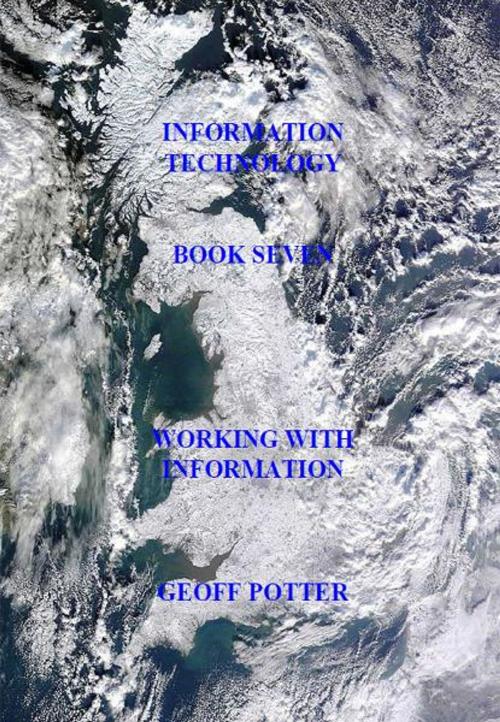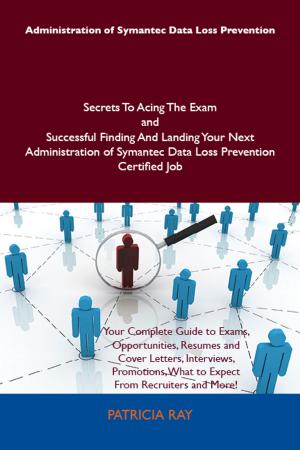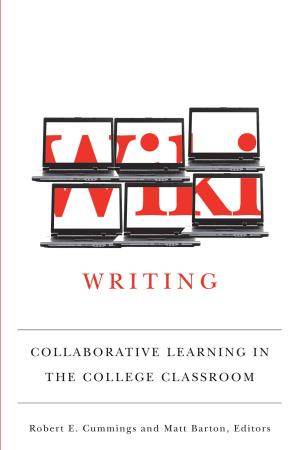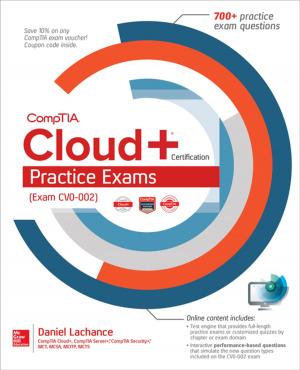Working With Information
Nonfiction, Computers, Application Software, Educational Software, Computer Hardware, Personal Computers, General Computing, Skills| Author: | Potter, Geoff | ISBN: | 9780986744068 |
| Publisher: | ITCA Digital Education Systems | Publication: | September 1, 2012 |
| Imprint: | Language: | English |
| Author: | Potter, Geoff |
| ISBN: | 9780986744068 |
| Publisher: | ITCA Digital Education Systems |
| Publication: | September 1, 2012 |
| Imprint: | |
| Language: | English |
This is the seventh book in a series of ten electronic books designed to educate young children and school-age students about information technologies and the digital world they live in. Who will benefit from this book? This book is most suitable for students in their middle grade levels. It is also very helpful for teachers introducing ICT or integrating it into the curriculum. Contents:Book Seven comprises six modules: Module 1: Exploring Information Technologies.This module enables the student to explore the nature of information technology in terms of history and human needs, which often lead to the development of new technologies. The module also introduces the student to the concept of systematic problem solving processes and their relation to information technologies. Unit One: What is Technology? Unit Two: People's Technological Needs. Unit Three: Problem - Solving Technologies.Unit Four: Information Technologies. Module 2: Scratch and Visual Basic. Scratch is a very powerful and easy-to-learn object-based programming language. It is popular with young people. Visual Basic is an important programming language used and taught today. The purpose of this module is to introduce the student to Visual Basic programming, with particular focus on the creation of practical objects and processes.Unit One: Programming Animation with Scratch. Unit Two: What is Visual Basic? Unit Three: Controls and Properties. Unit Four: Exploring Visual Basic Data. Unit Five: Adding Lists to an Application. Module 3: Programming with Alice.This module introduces the student to the Alice programming language. Fun and Interesting, Alice is easy to learn and provides the student with a valuable understanding of the programming process. Unit One: Animating Objects. Module 4: Creating Web Pages. This module focuses on helping the student to create web pages in two ways with the HTML programming language. Unit One: Creating Web Pages. Module 5: Examining Information Technologies. This module explores several of the most common and popular information technologies: how they evolved, how to use some of them, and what they do. The primary focus of the module is on photography. Unit One: Amazing Photography. Unit Two: 35mm Photography. Unit Three: Digital Photography.Unit Four: Photographic Technologies That Go Beyond Us. Unit Five: Radio. Unit Six: The Telephone. Module 5: Supercomputers And The Human Brain.This module explores the relationship between human intelligence and computer-based technologies. Artificial intelligence is examined and questions raised about the future evolution of technology. Unit One: The Amazing Human Brain.Unit Two: Artificial Intelligence. The book is colorful, creative and contains many challenges and activities designed to help young students understand how digital technologies work and how they may efficiently use them to learn and communicate. Virtually all of the recommended software is Open Source. The book also contains an integrated Continuous Assessment process which may be of value in some educational environments. Modules at each level are divided into skills and knowledge-focused units. At the end of each unit students may describe what they have learned and their parent or teacher may award points for each item covered. Marks may be accumulated throughout the school year. A grade based upon the total points accumulated may be awarded at any time during the year. There are no tests or examinations in this program.What are the intended uses of this book? 1.This book is designed to support both teachers and students in existing ICT curricula and may be useful in areas such as Science, Language Arts, Mathematics and the Arts. 2.The book supports public and private education systems instruction and skills training programs to ensure that young people possess the knowledge and skills to function in a digital society, and ultimately to prepare them for entry into higher education and an increasingly digital and computer-based workforce.3. Students and parents may use the book for home schooling use in support of study projects and personal skills development.
This is the seventh book in a series of ten electronic books designed to educate young children and school-age students about information technologies and the digital world they live in. Who will benefit from this book? This book is most suitable for students in their middle grade levels. It is also very helpful for teachers introducing ICT or integrating it into the curriculum. Contents:Book Seven comprises six modules: Module 1: Exploring Information Technologies.This module enables the student to explore the nature of information technology in terms of history and human needs, which often lead to the development of new technologies. The module also introduces the student to the concept of systematic problem solving processes and their relation to information technologies. Unit One: What is Technology? Unit Two: People's Technological Needs. Unit Three: Problem - Solving Technologies.Unit Four: Information Technologies. Module 2: Scratch and Visual Basic. Scratch is a very powerful and easy-to-learn object-based programming language. It is popular with young people. Visual Basic is an important programming language used and taught today. The purpose of this module is to introduce the student to Visual Basic programming, with particular focus on the creation of practical objects and processes.Unit One: Programming Animation with Scratch. Unit Two: What is Visual Basic? Unit Three: Controls and Properties. Unit Four: Exploring Visual Basic Data. Unit Five: Adding Lists to an Application. Module 3: Programming with Alice.This module introduces the student to the Alice programming language. Fun and Interesting, Alice is easy to learn and provides the student with a valuable understanding of the programming process. Unit One: Animating Objects. Module 4: Creating Web Pages. This module focuses on helping the student to create web pages in two ways with the HTML programming language. Unit One: Creating Web Pages. Module 5: Examining Information Technologies. This module explores several of the most common and popular information technologies: how they evolved, how to use some of them, and what they do. The primary focus of the module is on photography. Unit One: Amazing Photography. Unit Two: 35mm Photography. Unit Three: Digital Photography.Unit Four: Photographic Technologies That Go Beyond Us. Unit Five: Radio. Unit Six: The Telephone. Module 5: Supercomputers And The Human Brain.This module explores the relationship between human intelligence and computer-based technologies. Artificial intelligence is examined and questions raised about the future evolution of technology. Unit One: The Amazing Human Brain.Unit Two: Artificial Intelligence. The book is colorful, creative and contains many challenges and activities designed to help young students understand how digital technologies work and how they may efficiently use them to learn and communicate. Virtually all of the recommended software is Open Source. The book also contains an integrated Continuous Assessment process which may be of value in some educational environments. Modules at each level are divided into skills and knowledge-focused units. At the end of each unit students may describe what they have learned and their parent or teacher may award points for each item covered. Marks may be accumulated throughout the school year. A grade based upon the total points accumulated may be awarded at any time during the year. There are no tests or examinations in this program.What are the intended uses of this book? 1.This book is designed to support both teachers and students in existing ICT curricula and may be useful in areas such as Science, Language Arts, Mathematics and the Arts. 2.The book supports public and private education systems instruction and skills training programs to ensure that young people possess the knowledge and skills to function in a digital society, and ultimately to prepare them for entry into higher education and an increasingly digital and computer-based workforce.3. Students and parents may use the book for home schooling use in support of study projects and personal skills development.















